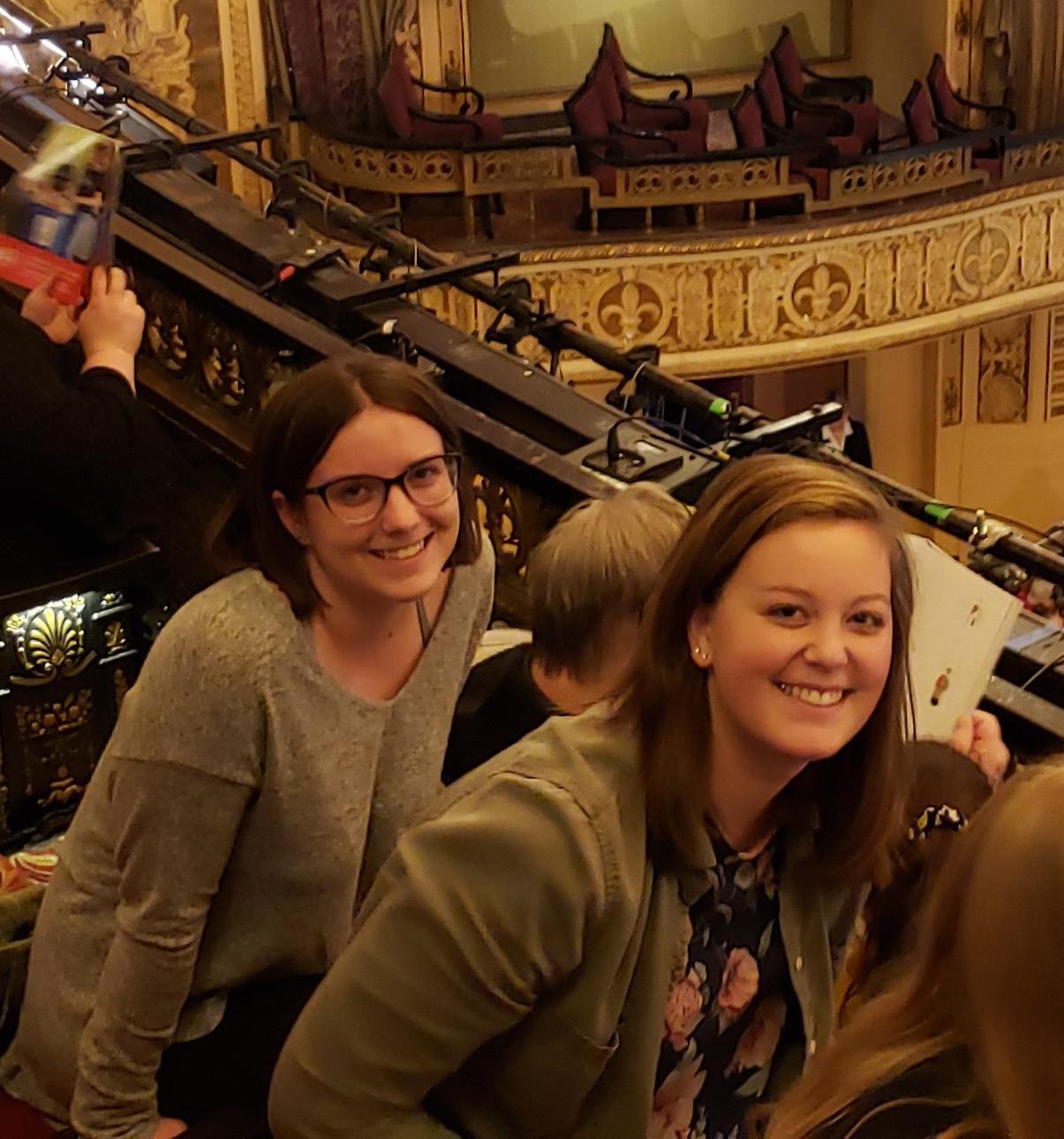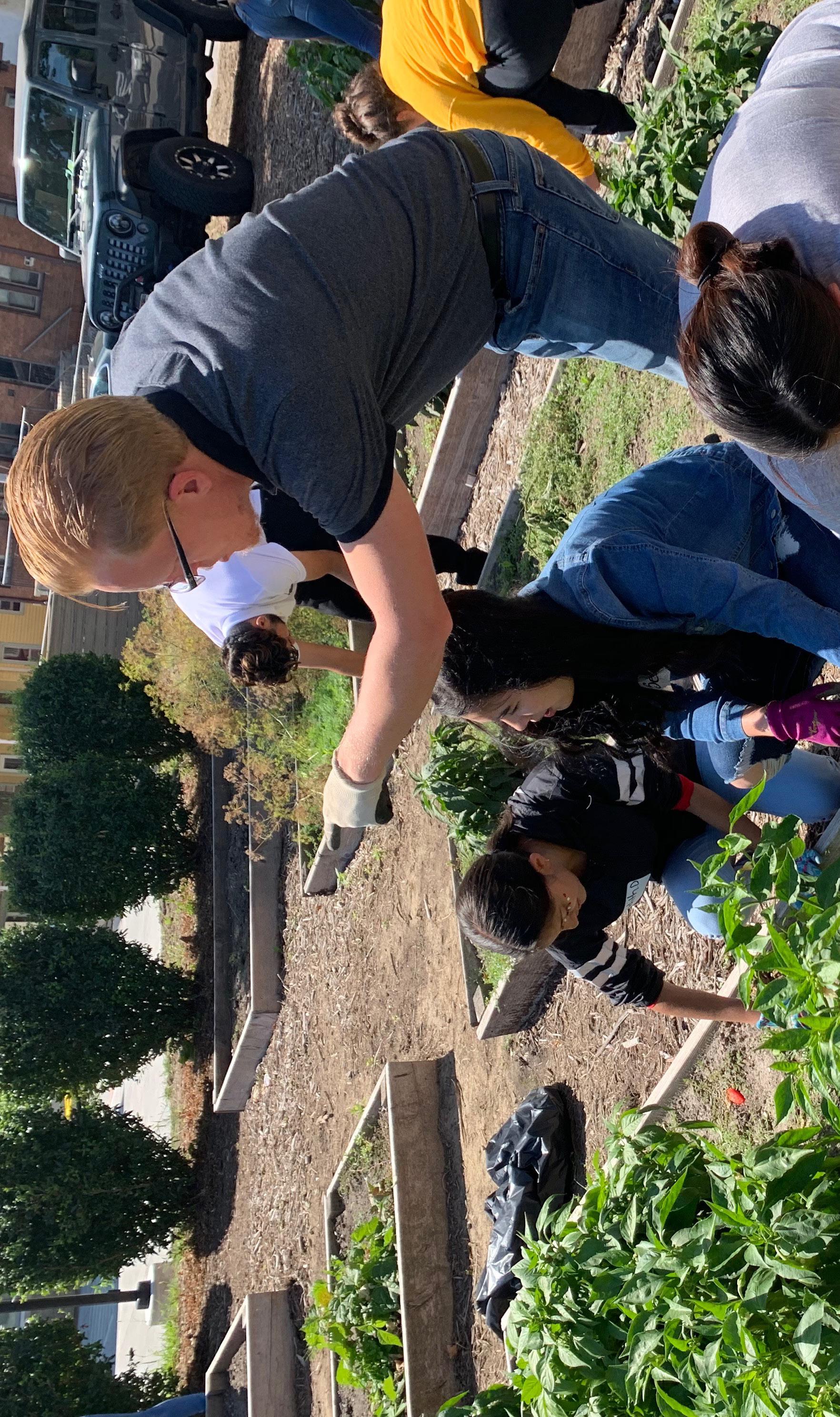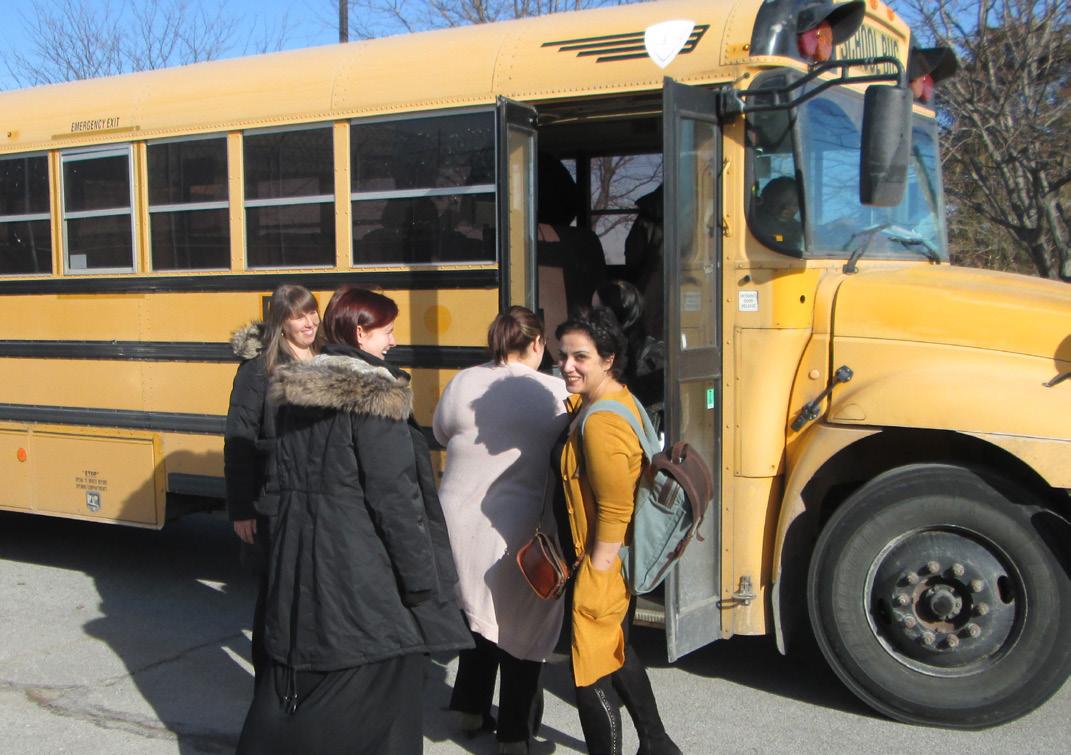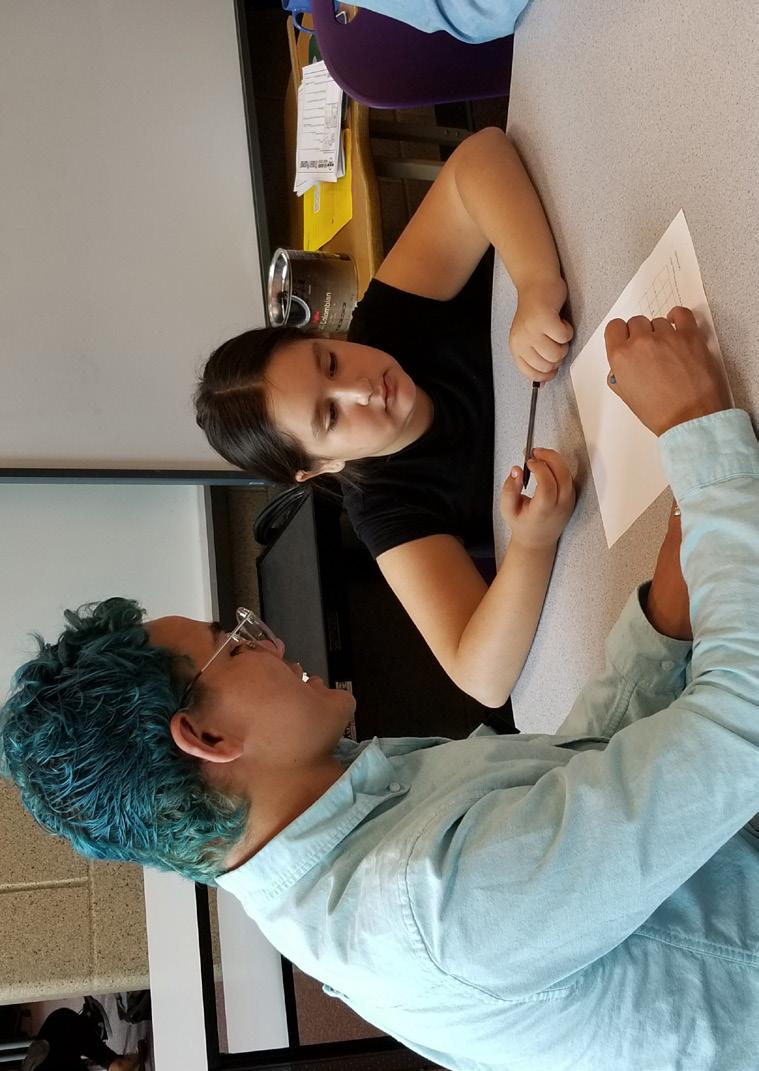
6 minute read
CARLYNN’S LEGACY LIVES ON
ART UNITES ALL By: Amairany Fuentes
Mustapha Barry speaks to a crowd about his culture and upbringing.
Advertisement
UNO students and seniors attend the Madama Butterfly production.

Seniors and UNO students reflect on their experience with Opera Omaha.
When we think about the community resources available and accessible to senior citizens, we often tend to think about health and wellness related resources. However, through UNO faculty member Christopher Kelly’s Community Resource course, UNO students were exposed to a wide range of community resources available to senior citizens that are not within the health and wellness model. Specifically, UNO students were able to learn more about opera in Omaha. Traditional
UNO students and senior citizens had the opportunity to attend Opera Omaha’s production of Puccini’s Madama Butterfly which depicts the story of Butterfly, a young Japanese woman that is married off to an American naval officer. Filled with love and betrayal, their story tragically unfolds. Throughout Madama Butterfly, the audience was exposed to heartbreaking melodies, mesmerizing sets, and vibrant costumes.
After the performance, both the UNO students and seniors had the opportunity to engage in an intergenerational discussion facilitated by Opera Omaha about Madama Butterfly. They began by discussing their expectations of the opera prior to seeing the performance and then elaborated on the ways in which their thoughts changed after seeing the performance. Afterwards, both students and seniors created collages that reflected an aspect of the opera that stood out to them during Madama Butterfly. Overall, the Community Resource course introduced opera to UNO students and seniors as a means to provide space for interaction among multiple generations.
“An important take-away from this project is the importance of building and sustaining relationships between members of our community across different generations. The opera is one of many ways in which different generations interact with one another and share common interests. There is much more we have in common than we might imagine and the arts is one way of discovering this.”
— Chris Kelly, UNO Faculty Member
DID YOU KNOW? In Fall 2019, the P-16 Initiative partnered with 20 unique P-12 schools in the Omaha Metropolitan Area.
FOOD SECURITY MATTERS By: Maria Jimenez and Katie Pankonin
UNO faculty member Jeff Knapp assists South High Magnet School students as they tend to the Together garden during their initial site visit.

The many P-16 and traditional service learning projects offered by the Service Learning Academy (SLA) that focus on issues of food security are testament to the SLA’s pledge to address high poverty in the Omaha community, as evident in the 2019/2020 strategic plan.
Food insecurity is defined as the social and economic condition involving the uncertainty of or limit on the basic accessibility of food. By connecting to community partners, the SLA historically recommends and integrates food accessibility and sustainability themes to the design and implementation of service learning projects. This fall was no exception as a variety of projects continued to address the same theme.
Two project examples occurred in UNO faculty member Jeff Knapp’s Social Work and Civic Engagement course. In one project, Food for Thought, UNO students collaborated with the Blackburn Alternative Program’s Culinary class taught by Staci Ivester-Christianson to serve meals at Adam’s Park Senior Center for the 10th year. The project celebrated the community as everyone was “brought around the table” to learn about food preparation while enjoying nutritious food and each other’s company.
Other UNO students collaborated with Kelly Lesser’s Omaha South High School Art class and the organization Together to create a cookbook that will be shared in varying capacities to inform, inspire, and empower the community regarding the impact of food and housing insecurity. South High students provided artistic visual components for the cookbook, while UNO students collected stories and recipes from Together clients.
Another project that addressed food security was a brand new project conducted by students of UNO faculty member Farrah Grant’s Introduction to Sustainability course and Royonna Bristol’s Omaha Bryan High School Honors Environmental Science class. Both student groups worked together through the semester alongside No More Empty Pots to research and present innovative solutions for food sustainability around the Omaha community.
Through firsthand service learning experiences with community organizations and leaders, students learn about and are witness to successful food security and sustainability programs in Omaha. The projects challenge students to be continual assets and resources moving forward in their community. Overall, providing food accessibility is a means to alleviating urgent poverty needs, and the Service Learning Academy aims to scaffold future generations of change-makers to find sustainable solutions.
BEYOND THE CELL By: Grace Nelson

UNO students load the bus to attend a site visit to the Nebraska Correctional Youth Facility.
Graduate students from UNO Faculty Member Mary Kate Hoffmann’s Social Work 8130: Generalist Practice I course partnered with the Nebraska Correctional Youth Facility (NCYF) for a service learning project for the fourth consecutive year this semester.
UNO students visited the NCYF on four separate occasions to practice the Generalist Intervention Model by working with incarcerated youth on identifying, understanding, and leveraging their strengths. Through exploring their strengths, UNO students worked with incarcerated youth to set meaningful goals for the future.
The initial visit familiarized UNO students with the NCYF facility, daily schedules, and the available resources offered to youth through an informational tour. On their second visit, UNO students met in the cafeteria, where they were assigned to one or two youth to conduct an initial assessment.
NCYF Volunteer Coordinator Geri Knight asked the youth to take a strengths test and forwarded the results to the UNO graduate students. By utilizing the test results, students discussed and identified strengths with their partnering incarcerated youth(s). Together, they worked on setting goals grounded in their identified strengths.
Overall, UNO students employed a strengths-based approach, core to social work practice. When engaging with their assigned youth, they empowered them by creating space for youth to name and own their strengths. Understanding the youth’s strengths and hopes for the future allowed UNO students to engage in meaningful conversation with incarcerated youth and connect them to valuable resources after their release and into their future.
FORMULA FOR SUCCESS By: Mustapha Barry

A Marrs Middle School student receives help solving math problems from her UNO student tutor.
UNO faculty member Michael Matthews’ Math for Elementary Teachers course collaborated with Marrs Middle School teacher Mary Kilnoski’s Math class for the Maverick-Falcon Math Partnership project, which allowed space for UNO students to coach the 5th grade students through math problems by applying innovative problem-solving techniques learned in their UNO course.
Students met at Marrs Middle School, where the 5th grade students received one-on-one math instruction. By applying the theories and skills learned in their course, UNO students utilized media and technology as means to teach the lessons. According to Matthews, a student’s ability to solve mathematical problems is enhanced when they can use a variety of tools to help them. Communication between students throughout the semester occurred virtually as well. “We made videos to communicate the solutions back and forth,” said UNO student Kylie Dorner. “It was heartwarming to see their faces and hear about their hard work... I will miss working with these students.”
This service learning opportunity was beneficial for the UNO students enrolled in the course, as they obtained hands-on practice with teaching math to young children. Marrs Middle School students were eager to celebrate at the project’s final interaction at UNO, where they were able to present what lessons they had learned throughout their involvement with the project.





